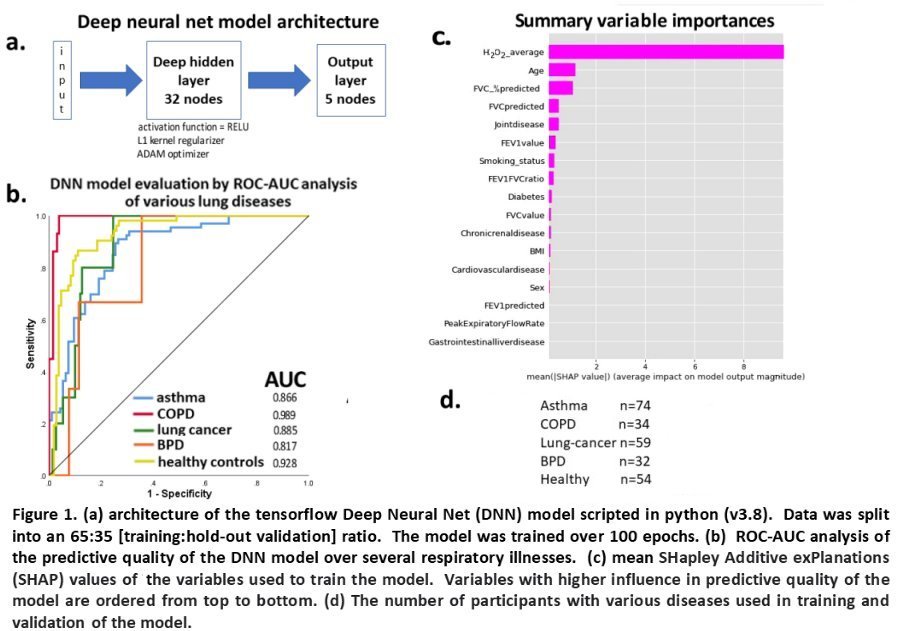Abstract
BACKGROUND
Ambiguities in diagnosis may delay definitive diagnoses of respiratory disease in primary care, delaying initiation of treatment. The VICTORY study evaluated a novel device; ?InflammacheckTM?, measuring H2O2 concentrations from exhaled breath condensate (EBC), which, in combination with spirometry and demographics created a deep-neural net (DNN) model, generating an artificial intelligence (AI) based diagnostic platform.
AIM
Could InflammacheckTM, combined with spirometry,be used to train a DNN model differentiating between different respiratory conditions?
METHODS
H2O2 in EBC from tidal breathing, spirometry measurements and various demographic parameters from informed and consented participants were used to train a DNN model, summarised in Fig 1.
RESULTS
Evaluation of the model by its ability to discriminate between various lung diseases are highlighted by the ROC-AUC results (Fig 1). Various parameters ordered by their importance in the discriminatory power of the model are shown, with H2O2-average EBC, the most important feature in the model.
DISCUSSION
InflammacheckTM in combination with spirometry, demographics and the DNN model, based on preliminary data from the VICTORY study, offers a way to diagnose patients with common lung conditions at primary care level, without the need for complex investigations. This therefore facilitates the early commencement of treatment, or referral to secondary care in a timely manner if required.